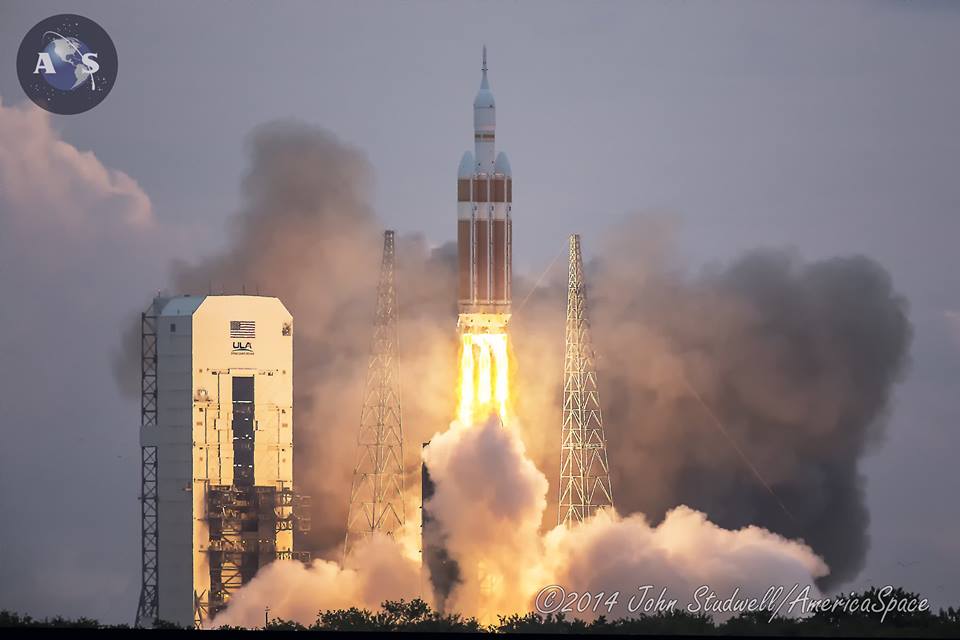
On Dec. 5, 2014, NASA entered the Orion era minutes after dawn broke across Cape Canaveral Air Force Station, Fla. The ground adjacent to Launch Complex-37B rumbled for miles and miles as an Orion capsule, meant to loft crews to deep space destinations such as the moon, cislunar space, asteroids, and Mars, was lofted to a high-apogee maiden journey atop a United Launch Alliance (ULA) Delta-IV Heavy rocket. Spectators across Kennedy Space Center and Brevard County, as well as millions around the world watching live, were thrilled at the sight of Orion leaving Earth atop columns of orange flame and smoke on the first spaceflight of America’s “Journey to Mars.” As our Senior Writer Ben Evans wrote on the day of the launch:
“ … Just 16 days shy of the 10th anniversary of its maiden voyage, the Heavy executed perhaps the most dramatic, exciting, and far-reaching mission of its career to date, by delivering Orion—the first human-capable spacecraft for Beyond Earth Orbit (BEO) exploration in more than four decades—on its inaugural shakedown flight.”
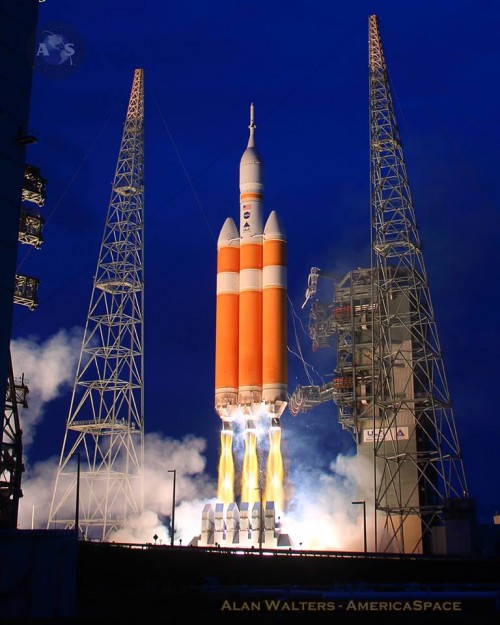
Orion’s uncrewed maiden test flight occurred a day after a disappointing scrub, when the launch was waylaid by circumstances including high winds, sticky fill-and-drain valves, and a wayward boat. But when she soared, she soared, and while in orbit provided incredible views of the Earth from an altitude of 3,609 miles (5,808 km).
Then the real test began, as Orion would make the first high-energy reentry of a human-capable spacecraft since the reentry of Apollo 17 in December 1972. Orion reached entry interface screaming into the Earth’s atmosphere at 20,000 mph (32,000 km/hr), and the spacecraft endured ultra-high temperatures up to 2,200 degrees Celsius (4,000 degrees Fahrenheit).
Following the deployment of two good drogues and three pilot chutes, Orion touched down in the Pacific Ocean off the coast of Baja, Calif., its shakedown journey completed with resounding success 4.5 hours following its fiery launch.
A lot has happened in the year following Orion’s maiden voyage on Exploration Flight Test 1 (EFT-1), which yielded more than 500 gigabytes of data to prove that the spacecraft’s many systems and subsystems performed as expected. As NASA enters 2016, just two years out from November 2018’s highly anticipated Exploration Mission 1 (EM-1), those working on the Orion program continue to learn lessons from EFT-1, while working toward EM-1’s integrated test flight of Orion, its European Space Agency-manufactured service module, and NASA’s mammoth Space Launch System (SLS) Block I rocket.
Initial Results and Building a Better Heat Shield
Just before Christmas 2014, EFT-1’s Orion capsule was returned to NASA’s Kennedy Space Center, not far from where it was launched, for extensive post-flight analyses. The spacecraft was outfitted with thousands of sensors for its inaugural flight; NASA stated that the flight test yielded more than 500 GB of valuable data. Much scrutiny was also placed on the heat shield, which poses a vital role in getting a crew home safely. Around the same time, a video showing the vivid colors of Orion’s high-energy reentry was released by NASA.
By all outward appearances, Orion’s first flight appeared to be flawless. An AmericaSpace report from Dec. 19, 2014, stated that 85 of 87 of Orion’s flight objectives were met: “The two flight test objectives not met were considered to be minor and will be the first to undergo investigation at the start of the new year. The first objective was two airbags that deflated after Orion splashdown, and the second objective was one airbag that did not deploy.”
While technicians took core samples of the spacecraft’s heat shield around that time, in February Orion’s back shell and heat shield were removed for further testing. The heat shield was then delivered to NASA’s Marshall Space Flight Center in Huntsville, Ala., known as the “home of SLS.” Engineers from NASA Ames and Marshall removed segments of the heat shield, fabricated in part with a material called Avcoat (which had also been utilized for the Apollo program’s Command Module), for inspection by various NASA researchers nationwide. In June, the heat shield was delivered to the Langley Research Center in Hampton, Va., for 2016 water testing.
While by all accounts EFT-1’s heat shield surpassed all expectations, changes were made to Orion’s thermal protection system for EM-1. On that flight, the capsule will make a circumlunar flight, exposing its surfaces to extreme cold/heat in space and, of course, fiery reentry conditions, further stressing the spacecraft. In January, NASA and Lockheed Martin added a 3-D woven thermal protection fabric, designed to fit between Orion and the service module. Six “quartz” compression pads will serve to absorb shock during launch and spaceflight operations; during reentry, the material will serve as an ablative thermal protection system.
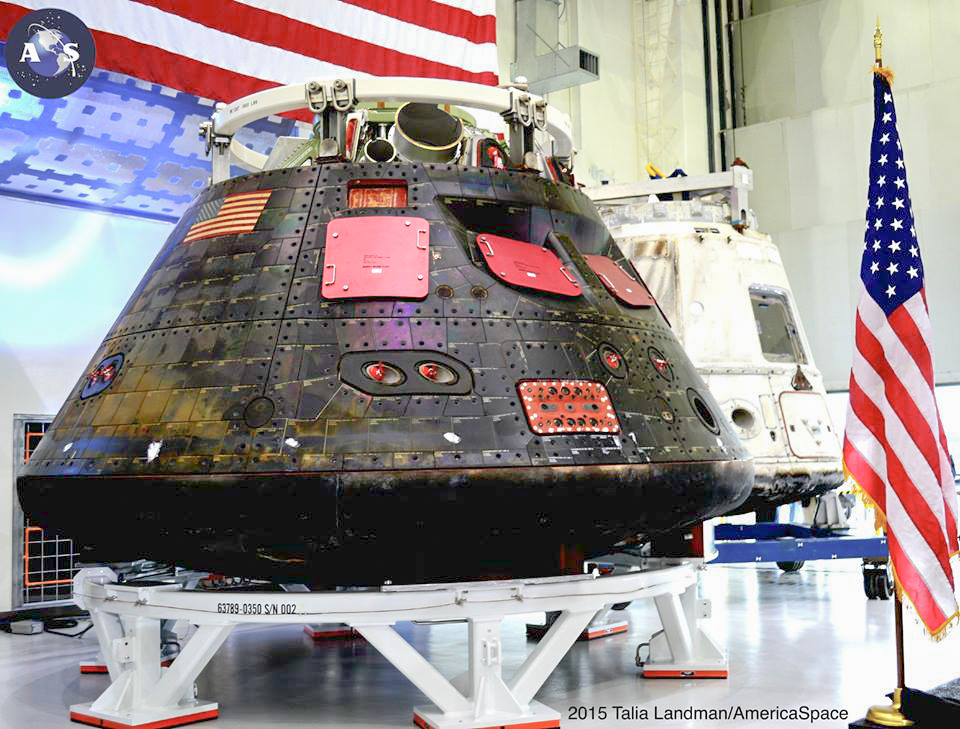
A more effective way of building the heat shield was proposed. Orion’s EM-1 outer heat shield surface will consist of 180 blocks, versus having it fabricated in one single, massive piece. Just weeks ago, it was announced that the spacecraft’s back shell will be covered with a silvery, metallic thermal control coating, which will not only reduce heat loss in deep space, but will also limit high temperature exposure to the crew.
The Next Spacecraft Comes Together
The rest of the year saw NASA, its partners, and contractors come together to build the next Orion spacecraft. In May it was announced by NASA that an Orion crew module and adapter full-scale mockup was completed at Lockheed Martin’s Littleton, Colo., facility; the fabrication of these mockups will aid engineers in configuring vital vehicle components prior to the flight of EM-1. In September, the flown module from EFT-1 was returned to Littleton; according to NASA, this capsule will be used “to evaluate a new acoustic technology to determine if the method can produce enough energy to simulate the acoustic loads Orion will experience during launch and ascent atop SLS.”
In June, a Crew Module Adapter (CMA) simulator arrived at NASA Glenn’s Plum Brook Station for testing, including all-important acoustics and mechanical vibration tests to simulate launch conditions. Also in June it was announced that the contractor Orbital ATK would be responsible for Orion’s Launch Abort Motor.
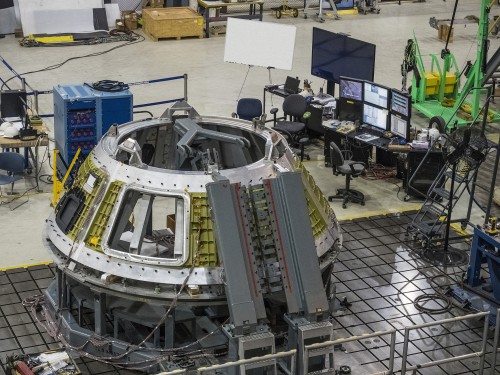
As 2015 continued to progress, more milestones were surpassed in design and fabrication. During the summer, NASA also announced it would begin testing the vehicle’s European Space Agency (ESA)-supplied Service Module, with a test article delivered in October this year. The Service Module is based heavily on ESA’s Automated Test Vehicle (ATV), which delivered cargo to the International Space Station (ISS) from 2008 to 2014. In the next year, engineers will test the Service Module and its components to ensure it can survive the stresses of launch and spaceflight.
In September NASA announced that the first welds on the EM-1 spacecraft (to its pressure vessel) had been made at the Michoud Assembly Facility in New Orleans, La. Aerojet Rocketdyne announced in October that it had completed a critical design review (CDR) for two vital systems, the Reaction Control System (RCS) and the jettison motor. Engineers have also evaluated changes to the spacecraft’s fairings and parachute system, the latter being vital to getting a crew home safely after a long voyage.
In October, Ben Evans wrote, “ … In August, the program entered its multi-month-long Critical Design Review (CDR) phase, described as ‘a rallying point for those with technical stakes in building and flying future Orion missions to ensure all elements are in sync, before moving ahead with full-scale fabrication, assembly, integration and testing.’ In addition to its focus upon the EM-1 spacecraft’s design, the review analyzed ‘additional common elements’—including the structure, pyrotechnics, LAS, software and Guidance, Navigation & Control (GNC)—which will be aboard EM-2, the first piloted Orion mission, presently scheduled to occur no later than April 2023.”
By the time of Evans’ writing, most of this CDR had been completed, clearing Orion to move into full-scale fabrication on track for the launch of EM-1 in late 2018. Lockheed Martin stated that this review included “the structure, pyrotechnics, Launch Abort System, software, guidance, navigation and control, and many others.”
More Testing Shows What’s In Store for Orion
While testing continues on spacecraft-related components, and a new Orion spacecraft is built, NASA and the space agency’s many aerospace contractors continue to work on other vital issues involving launch aborts and water testing. EFT-1’s Orion capsule will contribute directly to these two crucial objectives.
For the first time since the Apollo days, a spacecraft will have the capability to “rocket” itself away from a launch vehicle in the unfortunate case a mishap occurs during ascent. The space shuttle, which was in service from 1981 to 2011, did not have this kind of capability. While the shuttle had abort modes, it was not able to “rocket” itself to safety during a launch emergency. At worst, the spaceplane would have to perform a risky maneuver called “Return to Launch Site” (RTLS), where the flight crew would attempt to get the shuttle back to Kennedy Space Center’s Shuttle Landing Facility (SLF). Fortunately, NASA never had to find out if an RTLS would work.
Orion, however, will rocket itself away from its launch vehicle in the event of an emergency. In 2018, prior to EM-1, EFT-1’s spacecraft will be used for the Ascent Abort Test-2 (AA-2), which will occur from Launch Complex 46 on Cape Canaveral Air Force Station.
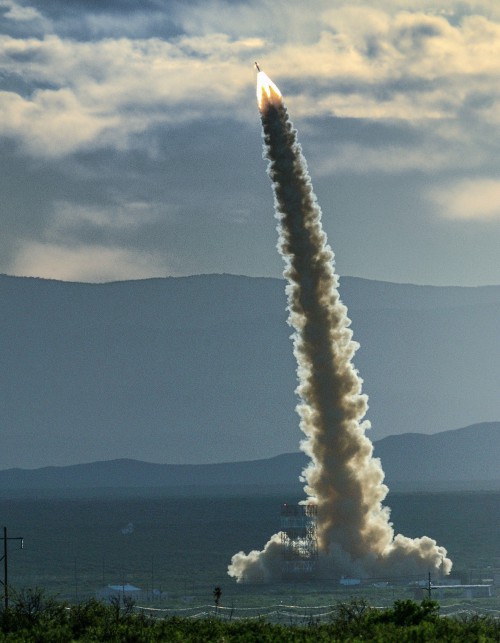
As noted in an AmericaSpace report earlier this year by photojournalist Elliot Severn, “On May 6, 2010, a prototype of the launch abort system was tested at the U.S. Army’s White Sands Missile Range in New Mexico. The launch abort system carried a boilerplate Orion capsule to an altitude of 6,000 feet, simulating a pad abort scenario. While the demonstration was successful, further development was put on hold when the Obama administration terminated NASA’s Constellation Program.”
EFT-1 did not require an abort motor to meet its mission objectives, instead an inert launch escape system was mounted to the vehicle to provide engineers at Orbital ATK with valuable data on structural, aerodynamic, and thermal loads experienced in flight. The launch escape system’s jettison motor, produced by Aerojet Rocketdyne, was also tested on EFT-1.
The capsule will be mounted aboard a Peacekeeper missile, while the abort system’s abort motor, attitude-control motor, and jettison motor will be given a full workout in demonstrating a crew can return home safely following a launch failure.
Moreover, EFT-1’s heat shield will be subjected to water impact testing at Langley Research Center’s Hydro Impact Basin in early 2016.
Lockheed plans to send the EM-1 pressure vessel to Kennedy Space Center’s Operations and Checkout Facility for final assembly, integration, and testing sometime in early 2016.
Looking Toward Orion’s Future
Space watchers are already planning for late 2018’s EM-1 flight, which will see the improved Orion integrated with its ESA Service Module and the SLS Block I launch vehicle, NASA’s most powerful heavy lift vehicle since the Apollo era’s Saturn V powerhouse. This flight will see Orion take a circumlunar path, once again testing the capsule’s thermal protection system as it is exposed to deeper space and even more stressful reentry conditions. Lasting for more than 20 days, this flight will certify Orion and SLS for future crewed missions. In September, it was announced that the first crewed Orion flight, Exploration Mission 2 (EM-2), would occur “No Later Than” April 2023.
Lockheed Martin’s Orion Vice President and Program Manager, Mike Hawes, underscored how close Orion is getting to its next moment in the spotlight. “The vast majority of Orion’s design is over, and now we will only change things when new requirements come into play. Considering the incredible complexity of this spacecraft, the team is very proud to have successfully completed the design review and is looking forward to seeing it fly,” he enthused.
What a long way Orion has come in just 12 short months. Rising one year ago today from Cape Canaveral on columns of vivid flame, the spacecraft has already undergone essential upgrades leading it on a course to deep space, a destination not reached by humankind in four long decades.
BELOW: Relive the launch of Orion EFT-1, one year ago today.
.
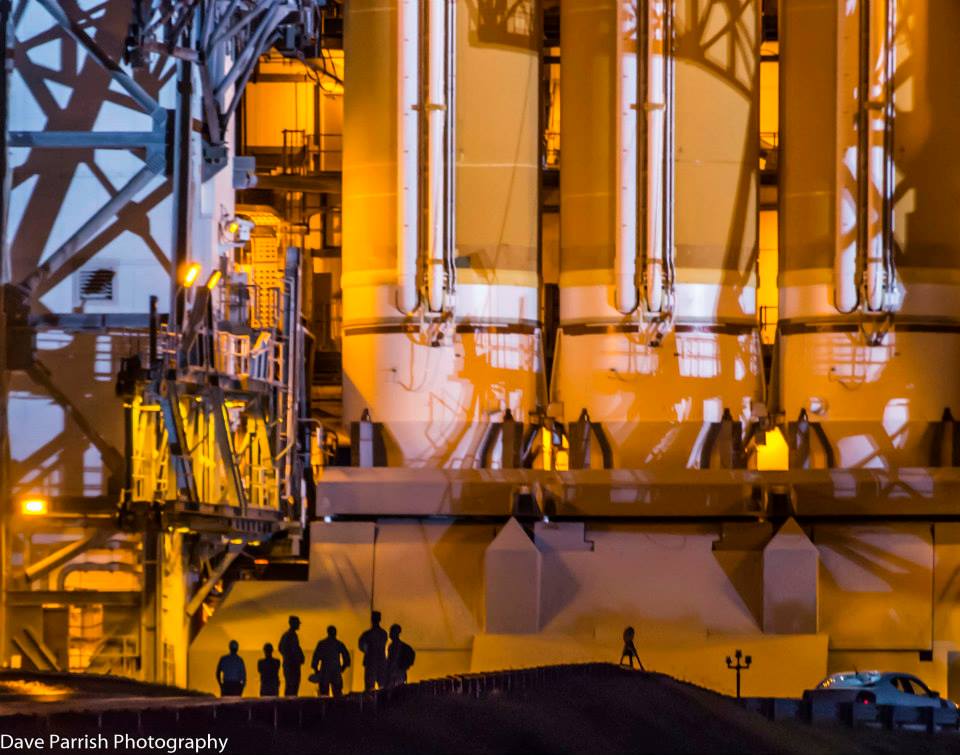
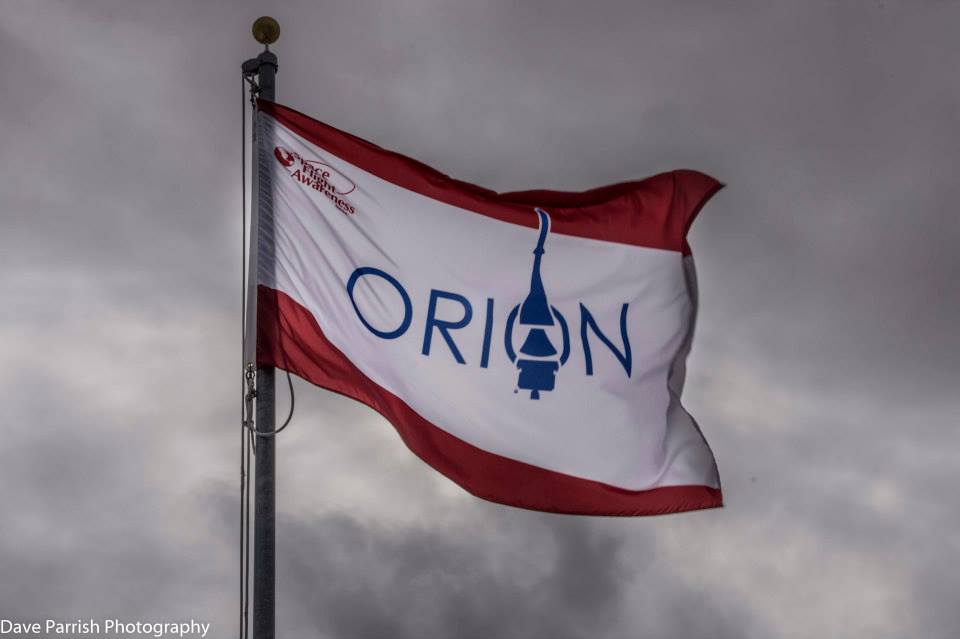
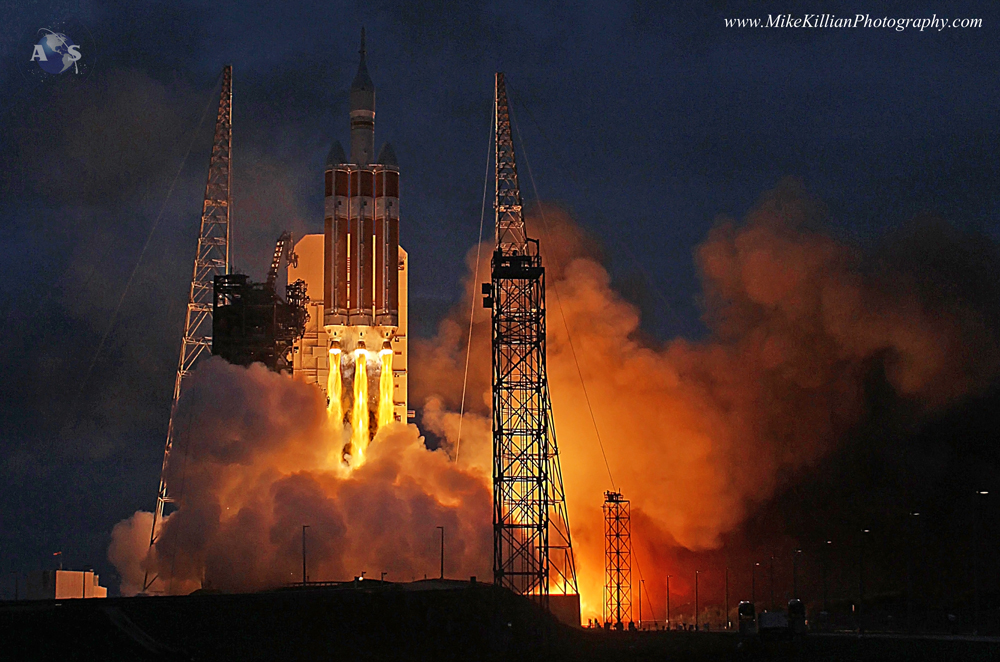
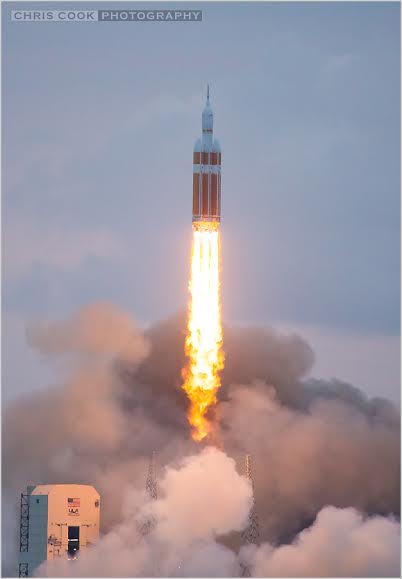
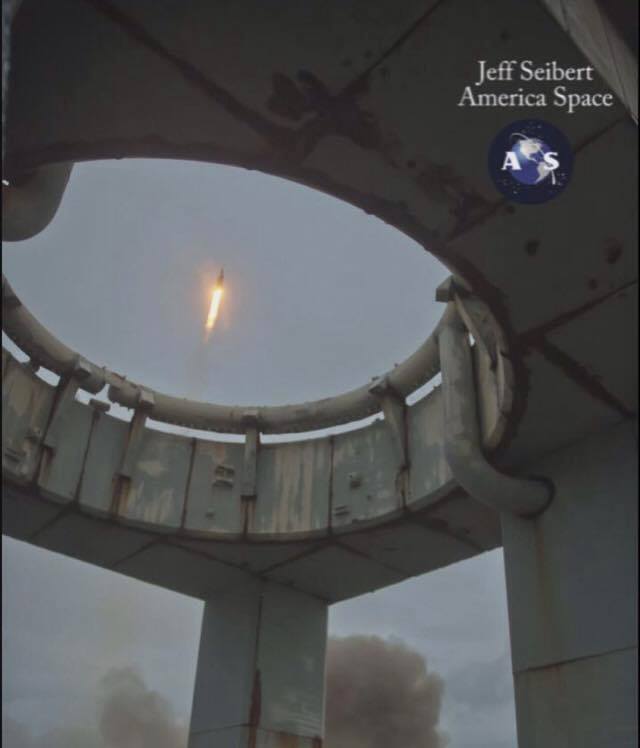
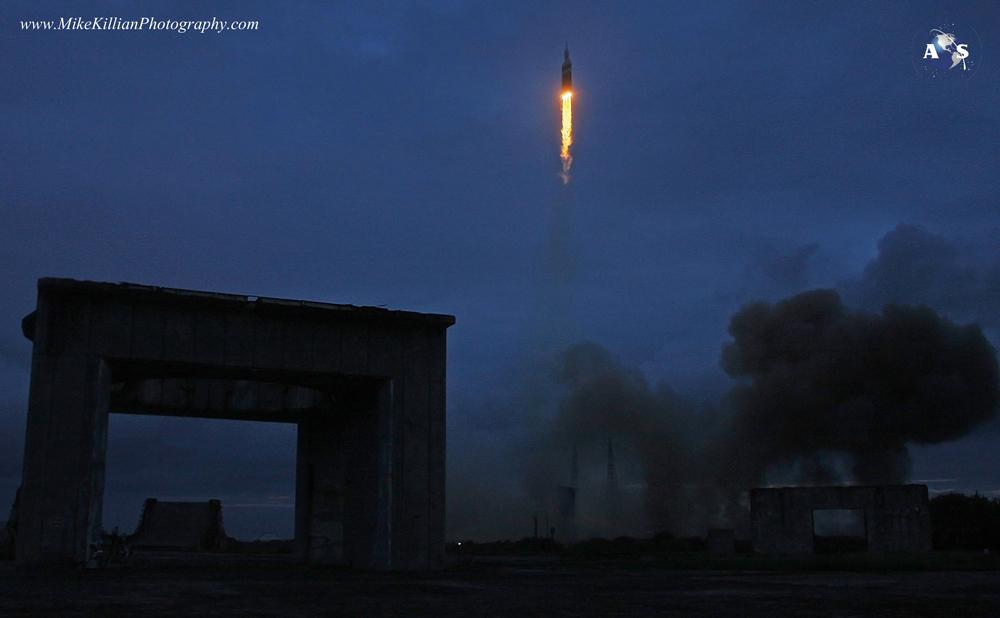
Be sure to “Like” AmericaSpace on Facebook and follow us on Twitter: @AmericaSpace
.
Missions » SLS » EFT-1 » Missions » SLS » EM-1 »



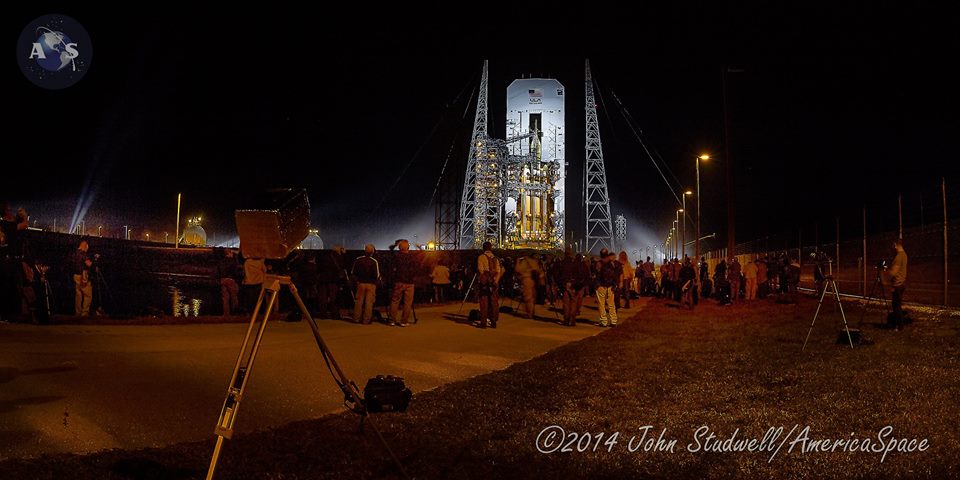
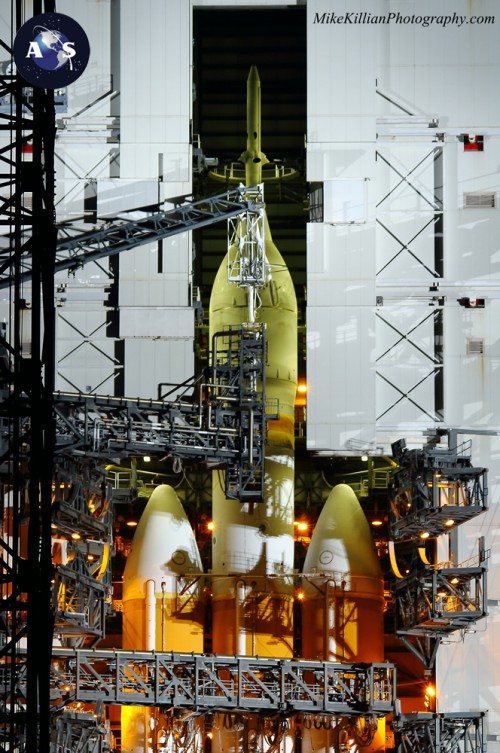

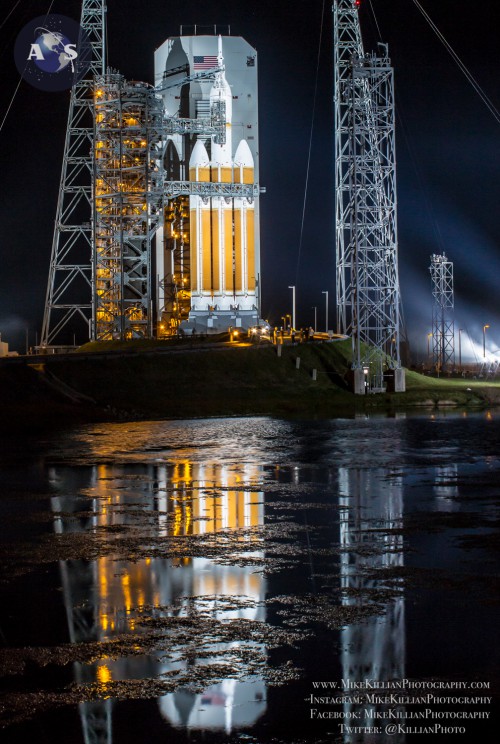
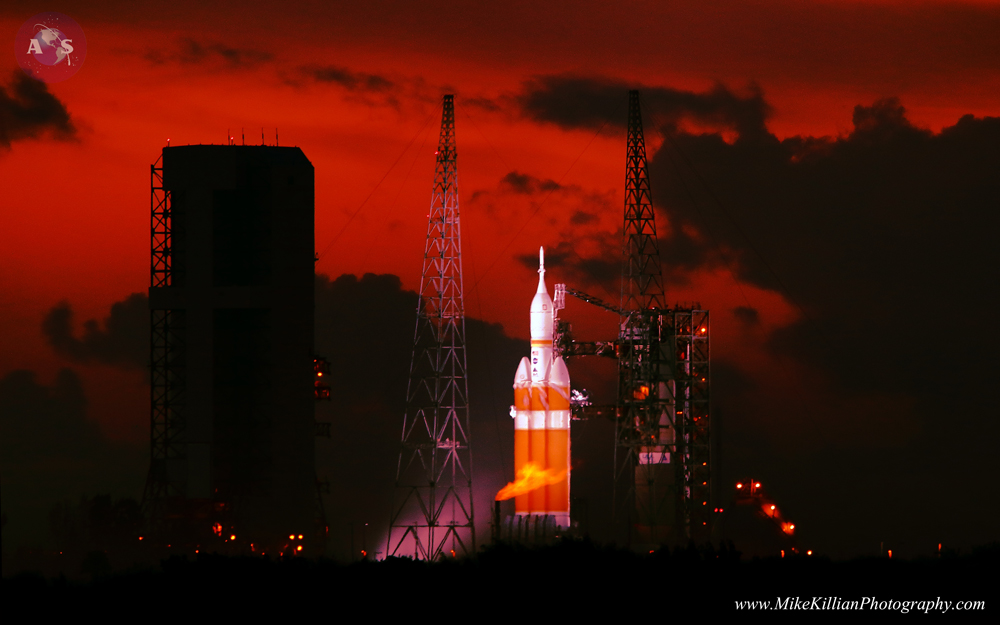

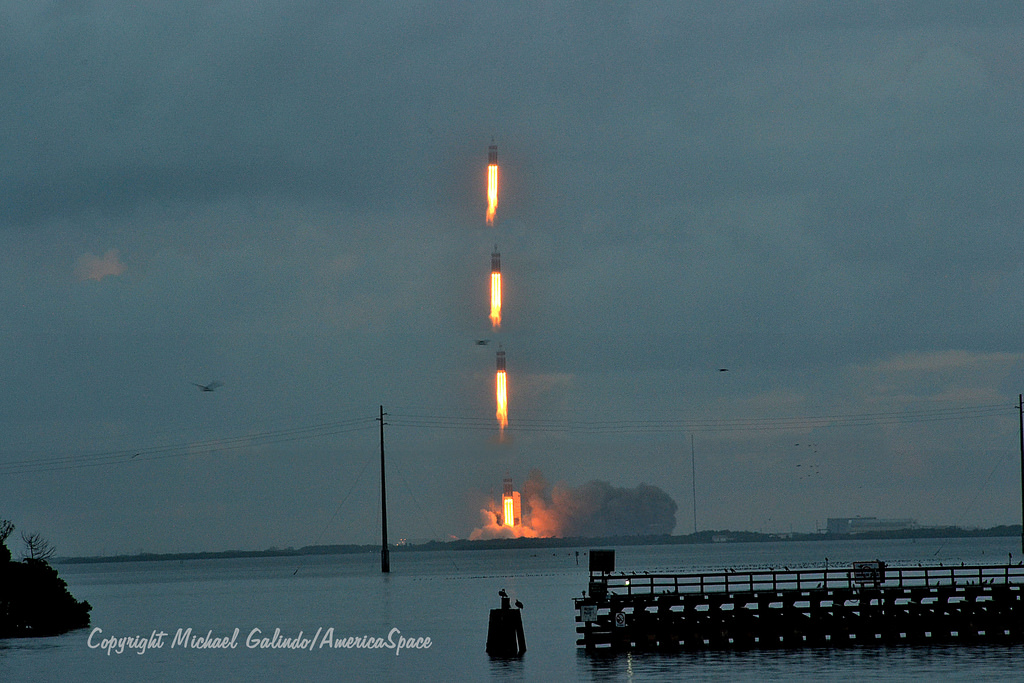
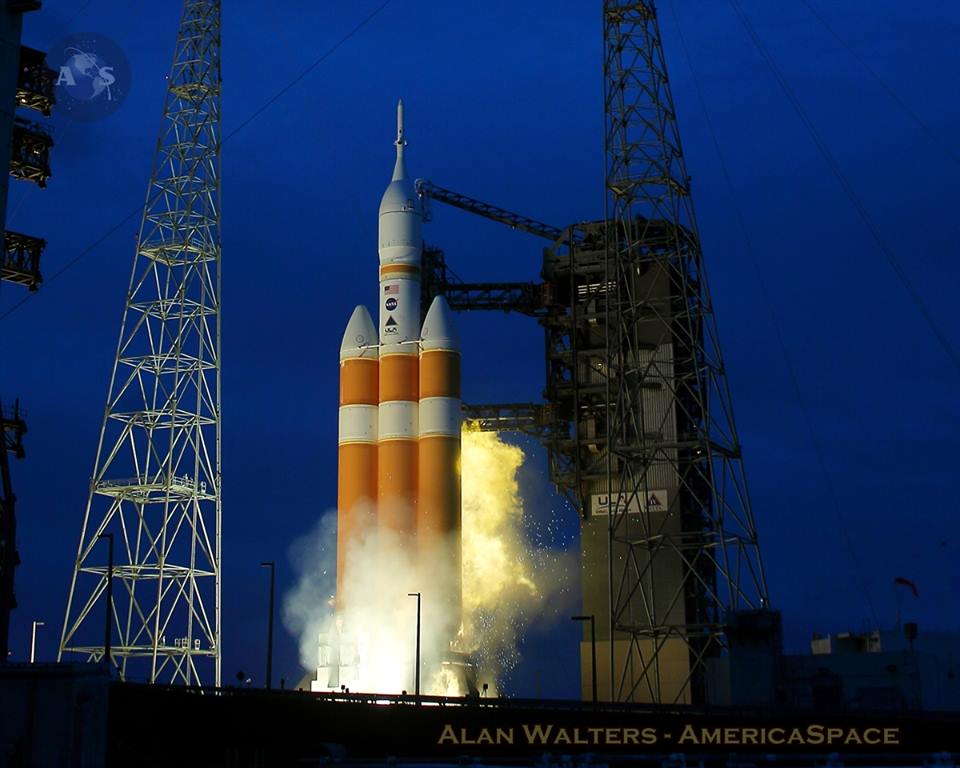
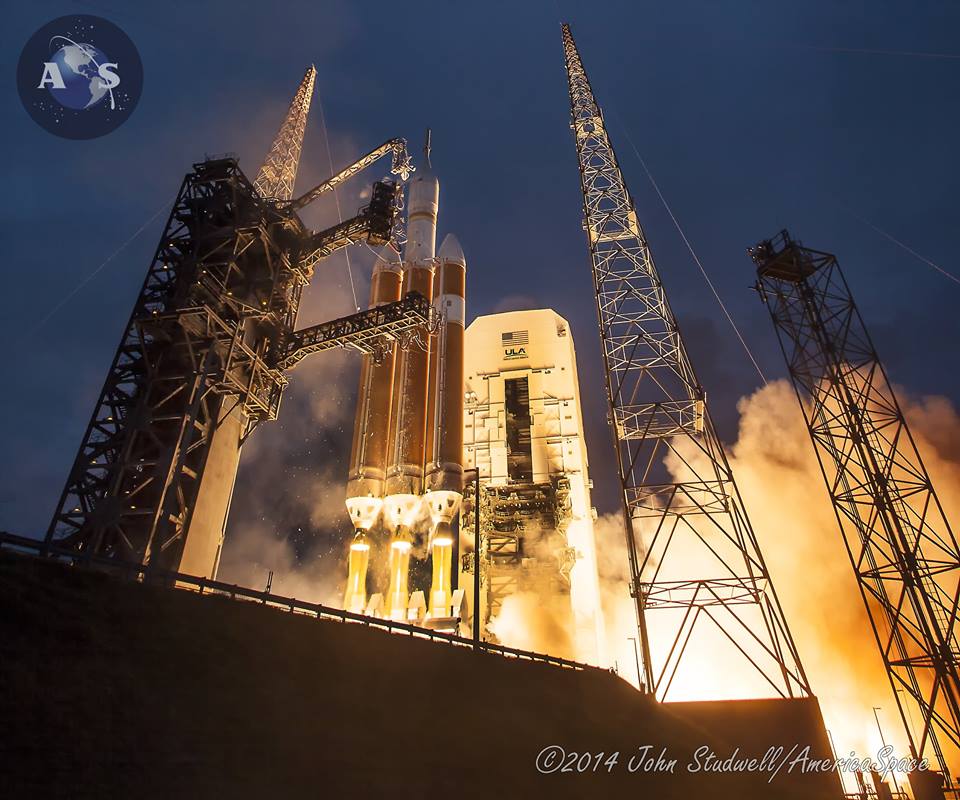
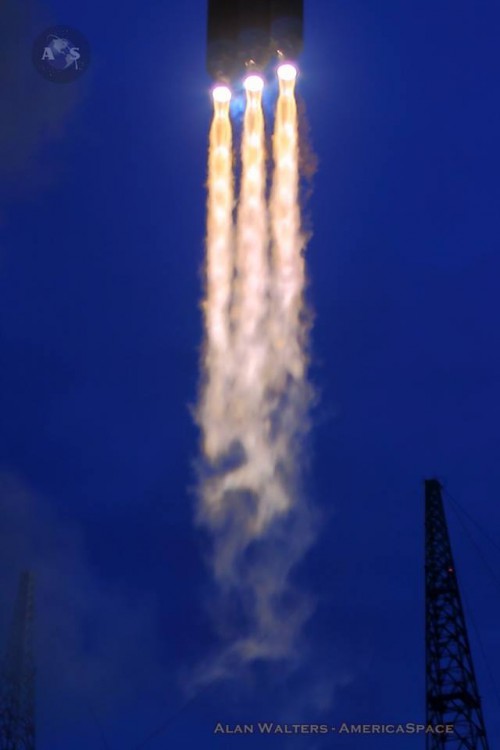
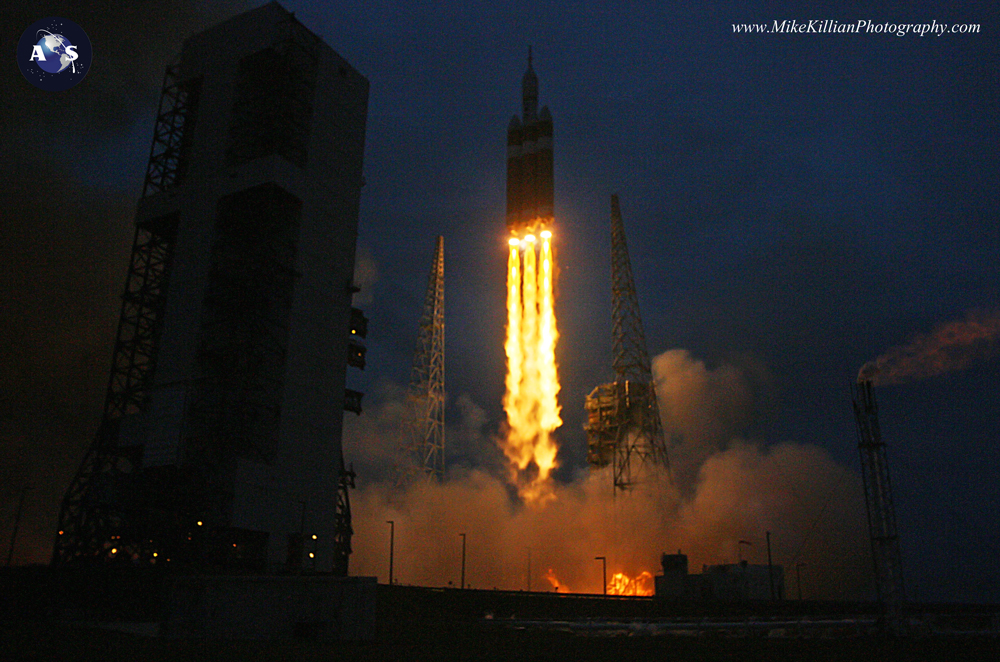

Goodbye NewSpace, hello deep space.
When the SLS lifts off it is only a matter of time before the U.S. is back on the Moon- this time to stay. LEO and Mars will be abandoned as dead ends and a second space age will begin.
Dates of 2018 for the next unmanned flight, that might slip too, and 2023 for the 1st manned flight do not inspire a lot of confidence. The first might happen but the 2nd…
Depends on what happens in those eight years. That is plenty of time for the other contenders to step up or fail.
LEO and Mars will be abandoned as dead ends and a second space age will begin.
Really? You think the commercial sector will abandon going to Mars & LEO? LEO will become what suborbital spaceflight is today. A tourist destination. Then the moon and Mars will become the next tourist destinations. After that it will be the rest of the solar system. Our government will never, never, ever run a complete space program by it self. The funding is too fickle as is the political will. Also, our government has proved that it is really an expert at start/abandon space programs. And as long as entrepreneurs are making billions of dollars, they will find a “hobby space business” to try to make more money.
Hard for me to put into words the revulsion and utter contempt I feel for space tourism, but I will try.
LEO is not space. It is two hundred miles up. Floating around looking out a window taking a radiation bath while debilitating is not space exploration and has zero future. The space station to nowhere is the last LEO space station, though the Chinese may send a couple cans up to test equipment. Nobody is going to invest a dime in a tourist space station because there is no possibility of a return. LEO has been hyped as some new frontier because a certain billionaire hobbyist cannot go anywhere else with this hobby rocket.
Outside of LEO solar events and cosmic rays will permanently and profoundly dose any humans not protected by massive shielding. That is a fact. Any long duration deep space missions equipped with sanctuaries that make such solar storms survivable only increase the long term exposure due to cosmic ray secondaries. That is a fact. The only guaranteed solution is massive shielding on the order of 500 tons of plastic or water for a small capsule. Realistically any spaceship or BLEO station will require well over a thousand tons and probably thousands.
The only practical method to push such a shield around the solar system is with nuclear pulse propulsion- there is no other solution. Lighting off H-bombs is not going to happen in the magnetosphere. The only place to both acquire shielding and use pulse devices is the Moon. The only significant revenue generator in space is GEO telecom. If “entrepreneurs” want to make money out there they will have to do better than satellites and the only thing better is a shielded space station with a crew of technicians.
A telecom platform with human technicians in GEO will require the before-mentioned shielding. Thousands of tons of water. The platforms would have to be assembled in lunar orbit and transit back across cislunar space to GEO.
Everything starts with that and anything else is a waste of time and money and will do nothing but hinder progress. If you want to argue about this I am game but first I insist you go to page 23 and look at figure 10 of this link:
http://www.homepages.ucl.ac.uk/~ucfbiac/Lunar_resources_review_preprint_accepted_manuscript.pdf
So I take it that you hate holiday sea cruises, too? Despite the fact that humans extract resources from the sea. And people pay to climb mountains for fun, too. Wherever there are extreme environments, there are or will be in the future, tourists and thrill seekers willing to spend money to experience it.
It’s not about thrill-seeking and tourism or being a space clown.
There you have it Arth, anything not mandatory is forbidden.
Whatever that means. I can only assume it is some cryptic Ayn-Rand-in-Space libertarian code only understood by true believers. The sycophants who trust their Tony Stark/John Galt/Howard Roark hero to provide them a space station vacation are the most bizarro feature of NewSpace.
Don’t you think a nice week long get away in a BEAM module would be good for the soul? Maybe take the edge off of moon fixation for a while? Just saying space hotel seems like a winner.
I think you are Coastal Ron, if not a cross-dressing se jones.
You should go back to The SpaceX Review and SpaceX News.
That’s just an observation, not a criticism in any way, shape or form, trust me.
Gary:
unlike you, neither Coastal Ron nor myself must hide behind a different profile name every other week to avoid being banned from web sites.
I have no idea who Clio Marsden is, but considering your latest web persona that’s pretty funny.
My name is Conway Costigan you clueless troll.
I have a question for you.
This is an actual question, not an attack.
re: “nuclear pulse propulsion”.
You’ve recently criticized VTVL rockets as some sort of retro 1950s concept. Fair enough.
But clearly, the Orion nuclear pulse spaceship is also an archetypal 1950s concept.
That’s just an observation, not a criticism in any way, shape or form, trust me.
So the question is; why no interest in the Nuclear Salt Water Rocket (NSWR)?
IMO Zubrin’s 1991 NSWR paper made nuclear (fission) pulse propulsion moot. What say you?
I have an actual answer for you, not an attack:
But first a comment: YOU are the one placing pulse propulsion in the 1950’s alongside space cadet shows as “some sort of retro- concept.” Project Orion originated with Stanislaw Ulam and was taken in hand by Freeman Dyson. The concept was endorsed by Arthur C. Clarke, von Braun, Sagan, and several other notables. Google them. They are not TV producers for childrens shows.
The answer is that bombs work. Tested over one thousand times. Since those tests we do not even know how many billions have been spent on Star Wars research on directed energy weapons (H-bombs that project most of their energy in one direction).
Bombs are relatively safe devices; The hypothetical NSWR is…..not.
If you are looking for the dream-come-true propulsion system, it is the fission fragment rocket utilizing Americium 242. Unfortunately mass producing that stuff would require building a trillion dollar new nuclear industry from scratch. It is the real-life unobtainium. Presently there is enough plutonium and enriched uranium in storage with no way to get rid of it for, by my rough calculations, about 200,000 bombs. Most of the concepts for pulse systems use about 2000 bombs for a mission to the outer planets. Keep in mind, unlike other systems, the problem is making the bomhs small enough and the larger they are the more efficient the spaceship becomes. Just adding a few ounces of tritium doubles, triples, and quadruples the power. The difficulty is building an “engine” large enough. That engine is essentially a metal disc.
Each bomb uses a pit about the size of a softball and could be transported in batches in survivable packaging on a human-rated super heavy lift vehicle with a powerful abort system (SLS).
I would add that it is hard to be precise and also short: I left out dozens of those small details that would explain my case more clearly and answer criticisms. Feel free to fire away any criticism; I welcome the opportunity to answer them.
Well OK that clears things up, thanks.
I will Google that Sagan guy first chance I get.
Funny, I spent some time chatting with a “Carl Sagan” at the 2nd Case for Mars conference in 1987, but since humans-to-Mars is a scam and a dead end I guess it’s safe to assume that guy was an impostor.
Another funny story: at that same Case for Mars conference, during the afternoon social hour I spent a good long time talking with some guy who claimed to have spent over 8 days traveling to the Moon and back in 1969! The guy (named “Buzz” I think) seemed quite healthy for a guy who spent over a week bathing in radiation while enduring low/zero gravity. Clearly…another elaborate impostor! At the same conference, wow what are the odds?
Over the years at a many AIAA, AAAS and Mars Society conferences I’ve met lots of men and women who claimed to have spent even longer times in “space” while taking baths in radiation and debilitating micro-gravity (some -much- longer times than the typical one week revolting “space” vacation). Oddly none of these folks appeared to be blind or otherwise debilitated from the ordeal. Obviously more impostors, these conference organizers really must vet attendees more thoroughly.
You’re so right! No revolting, contemptuous, free market Ayn Rand scam “space” vacations for anyone. Ever. The whole concept should be outlawed – NOW.
It’s atomic bomb spaceships to Saturn or nothing! Yee Haw.
That will be the last time I ever respond to you troll. Good job.
https://www.youtube.com/watch?v=8rEa9ACC-TM
This guy does a pretty good Carl Sagan impression and seems to be not such a fan of project Orion…
Conway, I always thought you were more of the “Inertialess Drive” fan.
He said it would work. I did not say he was a fan. Not feasible to use in the Earth’s magnetosphere. That is why the Moon is the place to assemble, test, and launch nuclear missions. You are not too intelligent Clio if you did not figure that out and if you did then your comment means you are a troll.
And I checked the rough number of bombs that could be made with the present stockpiles of material; it was 300,000 some years ago and not the 200,000 I estimated. We could enrich several times that amount within a few years if needed.
So you know Clio was Conway’s love interest, right? Are you…kind of that way, or are you just using that female character’s name to try and irritate me? There is someone who keeps trolling as “Gary’s drinking game” and I am thinking it is jones or Ron.
Whoever it is…..you are pathetic.
Technically Sagan used the phrase “in any case” which in English speaks for itself. There is a world of difference between physically possible, doable through engineering and ultimately practical. We have an almost impossibly hard time getting a light water reactor licensed in the US, on land, where it is covered in tons of concrete and steel. You want to have some launch vehicles to transport thousands of thermonuclear warheads to beyond LEO to fuel your craft, good luck with that. Or maybe just build reactor, PUREX and PU finishing plant on the moon…easy enough.
The ultimate irony of Conway’s, err I mean Gary’s, philosophy is that if we have the relative technical competence and practical ability to do what he wants it invariably implies that we have much more commoditized access to LEO and sub-orbital for all sorts of unrelated/diverse economic activities. The only way that isn’t the case is in a sort of Gary Spaceocracy where only the dear leader’s form of Space usage is legal and tolerated.
It’s pretty sexist to assume my gender just because I’m posting on this forum. One could be female and trying to annoy you or any other combination of gender and motivation.
“You want to have some launch vehicles to transport thousands of thermonuclear warheads to beyond LEO to fuel your craft, good luck with that.”
Considering a bomb pit weighs well under ten pounds and is the size of a softball and the LAS on the SLS would transport properly packaged pits that could survive an anomaly….you don’t need to wish me luck. It is completely practical.
“-the relative technical competence and practical ability to do what he wants it invariably implies that we have much more commoditized access to LEO and sub-orbital for all sorts of unrelated/diverse economic activities.”
Blah blah blah. Why don’t go back to The SpaceX Review and SpaceX News where your “philosophy” of free market babbling will be appreciated? I think you are Coastal Ron.
He has been sock-puppeting quite a bit lately (and completely denying it). If not maybe you are the cross dressing se jones- who seems to think some long ago momentary proximity to a couple notables gives him semi-divine status.
Whoever you are your criticism of nuclear pulse propulsion is not flying. You are clueless.
C’mon Ron,
If it’s you then you cannot resist robo-commenting me until I give up or you rationalize some universe-ending insult that allows you to claim victory.
I said as much on one of those sites where the moderator allows you to excoriate anyone criticizing NewSpace and then blocks that person. All my recent comments to you, er..Coastal Ron have recently disappeared from those forums. The NewSpace trolls have enjoyed this kind of protected cyberthuggery for years and still have to show up on sites where their trolling is not welcome using sock puppets. Disgusting.
So Clio,
“One could be female and trying to annoy you or any other combination of gender and motivation.”
Is that all you are trying to do, annoy someone?
Why not try to participate in a useful discussion?
You never can tell, if you tried it; you might even like it.
Nope, not here to just annoy Gary although if he gets annoyed, and starts spinning like a top, I can’t be held responsible. I’m not Coastal Ron or anyone named Ron or Jones; although with a few Google searches I can see Gary and Ron have quite a bit of history.
Clio,
Glad to hear it.
I trust, in future, we can hope to have you discuss some actual concepts/details, rather than simply just trying to “annoy Gary” (or whoever), which (to the best of my knowledge) is all you have done to date.
SE,
First you bait “Costigan” (whoever he may be – I do not really care) with a post addressed to him that starts:
“I have a question for you. This is an actual question, not an attack.”
Then when he gives you a sincere response, you launch into a lame attempt to mock him at “December 8, 2015 at 7:47 pm”.
I really do not care if he has all of his technical information wrong, he certainly has one thing correct – you are a classic (and rather clumsy) internet troll.
And that is true whatever anyone thinks of “Costigan’s” positions.
http://www.spacepolicyonline.com/news/nas-hears-about-lunar-orbit-shakedown-cruise-worries-about-readiness-for-new-administration
We are going back the Moon Joe, not Mars. The writing is on the wall and when the ISS starts developing problems (and it will) all that will be left is the Moon.
NewSpace is doomed. There will be no LEO space clown vacations.
I sincerely hope you are right about that (Moon vs. Mars that is – at least for the immediate future).
My only point in that post is there are ways to disagree with that position with serious argument and not resorting to bait and switch accompanied by childish snark, which is all SE (and I do not care who he is either) offered.
SE and Clio and whoever are all the same NewSpace trolls I have been dealing with for years and they are as a group detestable liars and bullies. I suspect Clio is really Coastal Ron- he does not have a shred of honesty or integrity in him and loves to play these endless games.
Check.
For the record I am just tired of posting a serious response to a serious post, then having my e-mail box clogged with endless back and forth of people arguing about who is who with no actual serious discussion about anything.
I addressed my comments to SE and Clio because (at least in this case) they instigated the “sand box” wars.
Well…I am sorry about that Joe. I return fire and it’s just the way I am. When someone is peeing down my back and telling me it is raining I don’t smile and ignore it. Habit I guess.
It’s funny though that people often tell me to lighten up and laugh and not to take it seriously. Usually after I object to some jackassian reply they have made that I call them on. Yeah, they were just kidding. Right. I have been mocked and ridiculed for my gravitas yet when I give it back MY comments suddenly disappear.
I am not bitter though:)
Understood.
Glad to hear it.
No sarcasm intended, have a nice evening.
What do you think about the Delta IV Heavy being the Orion Crew Launch Vehicle? Then it could rendezvous in LEO with a fully loaded SLS launched cargo/habitat/propulsion vehicle carrying all the hardware needed for Lunar orbital and landing operations.
Dual SLS launches that used both Launchpad 39A and Launchpad 39B could minimize mission risks and costs and also maximize payload mass on the surface of the Moon.
SpaceX being a given twenty-year control of the enormous Launchpad 39A appears to be a ‘political deal’ designed to help ‘kill off’ the SLS/Orion system by making it very difficult or impossible to do cost saving dual SLS launch Lunar missions and reduce risks for other Orion cislunar missions.
NASA not having control of Launchpad 39A means the SLS/Orion system is being highly restricted or ‘shackled’ to sharing Launchpad 39B with other large launchers and it also means the SLS/Orion Launch on Need rescue for when an SLS/Orion mission, or a private human spacecraft mission, gets into serious trouble in cislunar space cannot be be an option.
To put it bluntly, because NASA’s politicized leadership turned over control of Launchpad 39A to SpaceX, American and international astronauts doing Orion/SLS cislunar missions that are inherently much riskier than LEO missions will not have a Launch On Need backup SLS/Orion for a rescue option and will have a higher chance of dying.
And if those future Orion/SLS missions do not fly from LEO into cislunar space with a Lunar Lander attached to the Orion, those risky missions will lack the critical backup option of life support resources from the Lunar Module lander that saved the lives of the Apollo 13 crew when they were forced to abort their mission on April 14, 1970 after an Oxygen tank ruptured in the Service Module while the Apollo spaceship was 321,860 kilometers from Earth.
But of course today we are much more highly motivated than we were back in the Space Race days of yore, and thus NASA’s leadership has no real issue with sending American and international astronauts into high risk cislunar missions without a Lunar Module lander attached to the Orion and without a SLS/Orion Launch On Need launchpad capability, do they?
Whatever happened to, “Failure is not an option”?
Did those serious “Failure is not an option” NASA leaders retire and get replaced with ‘smarter’ folks that prioritize partisan politics and their careers above providing basic risk reducing backup options for astronauts?
Does planning to accept having unneeded risks and Orion cislunar mission loss of crew failures make perfect sense if you want the SLS/Orion program to fail?
Do SpaceX’s owners put a higher priority on their company’s profits than they do on NASA having the launchpad 39A enabled Launch On Need SLS/Orion backup capability to minimize mission risks on beyond LEO Orion/SLS missions, or do they simply think of the money they saved on free publicity by ‘renting cheap’ a famous national historic site and ‘simply ignore’ everything else?
How valuable is the ‘commercial branding’ of controlling and monopolizing the enormous Launchpad 39A ‘worth’ to SpaceX?
The President signed the NASA Authorization Act of 2010 (PL 111–267) into law but has apparently tried to ‘slow roll’ and repeatedly ‘under fund’ the Orion and SLS systems and has instead tried to promote increased funding for the Dragon LEO space capsule that is built by SpaceX, a company that is run by his ‘billionaire political friend’.
The President has also apparently now ‘anointed’ the Falcon Heavy by ‘cheaply’ renting our national historic site Launchpad 39A for SpaceX’s exclusive use for twenty years. At least initially, that means SpaceX using Launchpad 39A to launch the Falcon Heavy.
Thus SpaceX’s Falcon Heavy will be launched from Launchpad 39A as America’s or the President’s apparently ‘designated’ new heavy lift launch vehicle for large and heavy military and commercial satellites going uphill to LEO and GEO.
ULA’s Delta IV Heavy is quite reliable, but flies infrequently and thus is expensive.
Supposedly, SpaceX’s main claim to fame is ‘cheap’ launches ‘to get us to Mars’, and thus ‘cheap to Mars’ is the new ‘universal’ political mantra.
Forget launcher reliability questions and issues.
Forget minimizing risks for astronauts doing legally required SLS/Orion Lunar surface and other cislunar missions.
Forget the legal requirement of the Orion spacecraft being built with the risk reduction capability of doing emergency backup missions to the International Space Station.
When do we say goodbye to the reliable and useful Atlas V?
When do we say goodbye to the reliable and useful Delta IV Heavy?
What do the folks in Congress think about the rise of SpaceX’s Falcon Heavy Launchpad 39A needs as being much more important for the next twenty years than the needs of risk reduction options and minimizing costs for legally required SLS/Orion Lunar and cislunar missions?
How much more damage can the ‘cheap Mars mantra folks’ and the ‘lost in space’ President do to the SLS and Orion? Well, eventually someone is going to start cheering loudly for the low cost option of having smart robots do everything and letting humans just safely stay on Earth.
Yep, if the ‘cheap Mars mantra’ is the new inside the beltway Washington DC ‘business space plan’, then logically the international space billionaires that are now de facto ‘running’ America’s human space program will eventually decide to buy their launchers and launcher services from India or anywhere they can ‘put together’ the cheapest launchers on the cheapest launchpads to launch the cheapest spacecraft carrying the cheapest smart robots.
Whatever happened to the NASA Authorization Act of 2010 (PL 111–267) and the idea of America being a nation of laws? Maybe that useful space law ‘went out the window’ along with the security laws that strongly prohibited sensitive national security documents being stashed on a home-based private server that could be hacked by lots of ‘curious folks’.
So many questions, so few answers.
But obviously there sure are a lot of confused and unhappy space cadets that are busy chewing on each other because we lack a real beyond LEO human space program and instead get an endless stream of empty, unfunded, not based in law, simplistic, and nonscientific Mars rhetoric.
Arth wrote: “Delta IV Heavy being the Orion Crew Launch Vehicle? Then it could rendezvous in LEO with a fully loaded SLS”
And James replied: “Dual SLS launches that used both Launchpad 39A and Launchpad 39B could minimize mission risks and costs”
Would a dual SLS launch really be less expensive than a SLS / Delta Heavy launch? If SLS can launch for less than a Delta Heavy, contracting the bigger EELV launches to it could help bring costs down further by increasing production rate. I always figured it was quite a bit more expensive, though.
“Would a dual SLS launch really be less expensive than a SLS / Delta Heavy launch?”
Not with the manufacturing infrastructure having been restricted to allow no more than two SLS launches a year.
It does not have to be that way, but that is the way it is set up.
In my view Joe there are about a half a dozen key technologies required for Human Space Flight Beyond Earth Orbit and a second space age to become reality.
The first basic building block is the reusable pressure-fed booster of several million pounds of thrust. In hindsight going cheap with the SRB’s was perhaps THE singular mistake that doomed the Shuttle program. While the shuttle was actually a Saturn V class system it wasted most of the lift on the 737 size orbiter. The Saturn V was actually only just powerful enough to accomplish Moon landings and only because of LOR. Even the evolved 130 ton payload SLS is too small. So we still need to build these boosters and nothing is being done in this area. Until it is a key technology is missing and any HSF-BEO program will be hobbled and lacking. It is discouraging to watch so much time and effort being wasted on landing back rocket stages which is a dead end due to the rocket equation. The problem is scale more than anything else.
I would add these pressure-fed boosters alongside the Ehricke/von Braun wet workshop seem to be the only path that will establish a long duration human presence BEO (by way of lunar-water-as-radiation-shielding).
It is like a puzzle and all the pieces are on the table but nobody is interested in putting it together.
The first piece was the Soviet/U.S space race. The communists had the totalitarian mechanism to throw the resources of the state behind their program but were lacking the capitalistic motivation that created our technical excellence. Though it is hard for many to admit, we largely mimicked their state-run enterprise and applied our private enterprise expertise to make up for the Soviet system disadvantage. We have to revisit that. Unfortunately, the libertarian underpinnings of the NewSpace movement are toxic to any such organizing principle.
The second piece of the puzzle was put on the table by Gerard K. O’Neill. He presented a model taking into account all the salient features of our situation. He correctly correlated three elements:
No natural bodies in the solar system are suitable for colonization and we would have to build spinning hollow moons (Bernal Spheres).
Space Solar Energy is the base industry from which all progress will originate. He was particularly prescient considering the present climate change situation.
The shallow gravity well of the Moon makes that body the resource enabling the first two elements. The ice on the Moon has validated this view.
These first two pieces make it clear that a state-sponsored public works project, like the Panama Canal or Hoover dam, and the Moon are how to begin putting the puzzle together. NewSpace completely rejects this.
And to finish this little dissertation, I will ask and answer a question: what should be the first goalpost, the first milestone to measure success for the U.S. Space Program and the public?
Place wet workshops in lunar orbit with an iteration of the SLS.
Ferry water up from the surface with robot harvesters till the first two of these empty stages have full radiation shields.
Connect the twin workshops with a tether system and spin the construct to produce Earth gravity.
The resulting “true” space station would provide a near-sea-level radiation environment at one G and the over one thousand tons of water would provide a medium for a closed-cycle-life-support system providing air and water for several years without resupply.
The crew would look out through the double view port through the water shield at a slowly rotating star field. Continuous production of these stations would send a chain of them back across the cislunar sea to GEO to replace the satellite junkyard and capture hundred of billions in telecom revenues.
This would be the first step and a nuclear propulsion system to mate with such stations, thus creating an exploration fleet of “true” spaceships, would be the second.
“It is discouraging to watch so much time and effort being wasted on landing back rocket stages which is a dead end due to the rocket equation.”
That’s not NASA’s funds. That is a private/commercial company’s prerogative. You will notice that the government isn’t bothering trying to land an rocket stage on land.
Not NASA funds? What do you think built SpaceX from almost the ground up? Without the Columbia disaster and the space station to nowhere there would be no SpaceX. Your tax dollars at work Arth. You may not have a problem with Musk charging more per pound than the space shuttle and pursuing his hobby but some of us have not drank the kool-aid.
Tim Andrews and Arth –
“Would a dual SLS launch really be less expensive than a SLS / Delta Heavy launch? If SLS can launch for less than a Delta Heavy, contracting the bigger EELV launches to it could help bring costs down further by increasing production rate. I always figured it was quite a bit more expensive, though.”
If we follow the NASA Authorization Act of 2010 (PL 111–267) and use the SLS and Orion to lead international missions to the Lunar surface, then some questions seem obviously relevant to your concerns about the costs of substituting the Delta IV Heavy for a second SLS launch.
If overall large launcher costs are to be considered, do you also have to ask what are the costs of failure?
If we fail to establish a thriving and growing human and robotic colony on the Moon due to a lack of careful planning and implementation, we humans could easily again ‘fall back’ to LEO and not have humans go back to the Moon for many decades.
If we fail to tap Lunar resources and develop cislunar space in a manner that builds international trust and economic growth, we could end up contributing to the growing gap between the rich and poor in the world and to simply reinforcing those ideas, fears, and issues that lead to war.
How much mass can you put on the surface of the Moon with dual SLS launches?
How much mass can you put on the surface of the Moon with an SLS launch and a Delta IV Heavy/International Orion launch?
How high of a priority is the Delta IV Heavy to America’s national security interests?
How high of a priority is the SLS to America’s national security interests?
Note: According to Wikipedia:
The Delta IV Heavy costs about per launch $375,000,000 for a payload of Payload to LEO of 28,790 kg or 63,470 lbs.
Delta IV Heavy’s combined gross liftoff mass of only its three cores is about 679,200 kilograms.
Note that the current Orion spacecraft weighs about: 25,748 kg (56,765 lb) and if the Orion is going to enable Lunar surface missions in the smart manner that they did Apollo missions with an Apollo spacecraft that had a delta-v capability of 9,200 ft/s or 2,800 m/s, then the Orion will need to substantially increase its current delta-v from ~4,390 ft/s or 1340 m/s which probably means much heavier propellant tanks.
Thus a fully Lunar mission capable Orion will probably become much too heavy for the Delta -IV Heavy and require a dual launch SLS mission plan.
And that’s just another reason why NASA needs Launchpad 39A.
Note: The Apollo spacecraft weighed in at around 63,500 lbs.
The SLS costs around $500,000,000 (maybe)
with a payload to LEO is 70,000 to 130,000 kg or 150,000 to 290,000 lb
The gross liftoff mass of the SLS core is about 979,452 kilograms
Is the SLS, which has perhaps two to four, or more, times as much LEO payload capable as the current Delta IV Heavy, eventually going to be used after 2028 to replace ISS modules and significantly extend the ISS mission lifetime?
Note: For many politicians in the world missions to the ISS may be seen as less risky and much more affordable than Lunar or Mars missions.
Will the Delta IV Heavy payload capability to LEO eventually be significantly increased by replacing its current RS-68A rocket engine on each core with two of the new low-cost RS-25 rocket engines on each core and adding two very large SRBs or kerolox boosters that would be enabled by such an engine swap?
What would these changes, and the costs of the six RS-25s and two SRBs, mean for Delta IV Heavy launch costs?
Would such changes also mean the Delta Heavy would become human rated?
How frequently could the SLS fly in 2025, 2030, 2035, 2040, 2045, and 2050?
Should the SLS eventually take over the national defense heavy launcher role of the Delta IV Heavy?
Should the core of the SLS eventually have the option of sometimes being reusable?
How important is large launcher dissimilar redundancy for America’s goals in fully implementing the NASA Authorization Act of 2010 (PL 111–267) with risk minimized Lunar missions while at the same time safeguarding or expanding new large launcher military capabilities?
What are the large launcher costs for Blue Origins and similar companies?
The SLS is being built and has significant and largely unappreciated growth potential including sending over 150 metric tons to LEO if it eventually uses large liquid propellant boosters.
High Isp solid propellant or hybrid boosters for the SLS may also be possible with the result being the capability of putting payloads into LEO potentially equal to, or maybe even larger than, the over 150 metric tons that would be possible with current technology liquid propellant boosters.
The SLS has extensive mission tested flight reliability and high performance designed into the four large and highly efficient RS-25 hydrolox rocket engines that power its core.
It doesn’t appear that anyone in America is going to build and test an equivalent to the high performance large hydrolox RS-25 engine anytime soon.
Even if someone did build such a new large hydrolox rocket engine, it would probably take twenty or more years for that new hydrolox engine to gain the extensive and reliable flight experience that the reusable RS-25 has right now.
And for the record, the SLS wasn’t designed by Congress. It was actually mainly designed by the Direct Team which was composed largely of NASA folks. Those space cadets who were paying attention in 2006 probably remember that evolutionary design process.
“Will the Delta IV Heavy payload capability to LEO eventually be significantly increased by replacing its current RS-68A rocket engine on each core with two of the new low-cost RS-25 rocket engines on each core and adding two very large SRBs or kerolox boosters that would be enabled by such an engine swap?”
Wasn’t there a plan, that was never exercised, to add three solid rocket boosters to each of the liquid side boosters of the Delta IV? Thus increasing it’s Kg to orbit.
Yes there was a plan to increase the lift by adding them and you can find it with google.
It was never implemented because the the biggest spy satellites were built to go up with the standard 3 core launcher and thus there was no requirement. It also added more “failure points.” The miracle of propellant cross-feed was also much-discussed but adding all that plumbing adds weight and more failure points and is somewhat self-defeating. The funky falcon faux heavy will not be flying with that feature to start with as far as I know. Since the miracle adds several tons to the advertised payload I will be interested to know what the real payload figure is. If that 27 engine monstrosity ever launches.
Thanks for the info.
“When the SLS lifts off it is only a matter of time before the U.S. is back on the Moon- this time to stay.”
I wish I shared your positive believe that was true, I certainly hope it comes to pass.
Well done, Ms Carney. Thanks for the status update.
“The ground adjacent to Launch Complex-37B rumbled for miles and miles as an Orion capsule, meant to loft crews to deep space destinations such as the moon, cislunar space, asteroids and Mars, was lofted to a high-apogee maiden journey atop a United Launch Alliance (ULA) Delta-IV Heavy rocket.”
Nice sentence!
Thank you Emily Carney! Your lovely Orion update article and pictures from Exploration Flight Test 1 in 2014 put smiles on my face.
The Moon is only an affordable three day journey away and we are getting some of the essential tools needed to live there and tap its resources.
One big question remains. Who is going to build the Lunar Landers?
Who is going to build the lunar lander?
Probably Bezos since he has a small enough engine that can be converted to burn methane and also a relationship with ULA which is also working on methane and a piston engine system to maintain it for a several day trip to the Moon.
Or he can continue to play the billionaire space clown hobbyist pursuing LEO playboy clubs.
My wife Karen and I watched the launch of EFT-1 from the NASA Causeway, so this article (and the photos) brought back a lot of great memories. Go Orion! Go SLS! Go EM-1!
Beautiful launch and beautiful photos. The government-owned part of our compromise space program is steadily progressing.